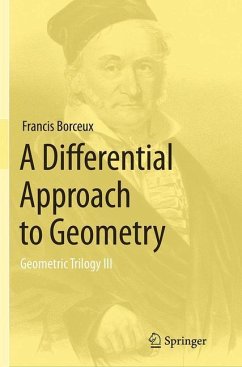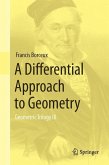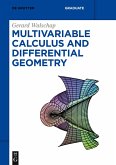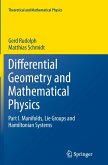This book presents the classical theory of curves in the plane and three-dimensional space, and the classical theory of surfaces in three-dimensional space. It pays particular attention to the historical development of the theory and the preliminary approaches that support contemporary geometrical notions. It includes a chapter that lists a very wide scope of plane curves and their properties. The book approaches the threshold of algebraic topology, providing an integrated presentation fully accessible to undergraduate-level students.
At the end of the 17th century, Newton and Leibniz developed differential calculus, thus making available the very wide range of differentiable functions, not just those constructed from polynomials. During the 18th century, Euler applied these ideas to establish what is still today the classical theory of most general curves and surfaces, largely used in engineering. Enter this fascinating world through amazing theorems and a wide supplyof surprising examples. Reach the doors of algebraic topology by discovering just how an integer (= the Euler-Poincaré characteristics) associated with a surface gives you a lot of interesting information on the shape of the surface. And penetrate the intriguing world of Riemannian geometry, the geometry that underlies the theory of relativity.
The book is of interest to all those who teach classical differential geometry up to quite an advanced level. The chapter on Riemannian geometry is of great interest to those who have to "intuitively" introduce students to the highly technical nature of this branch of mathematics, in particular when preparing students for courses on relativity.
At the end of the 17th century, Newton and Leibniz developed differential calculus, thus making available the very wide range of differentiable functions, not just those constructed from polynomials. During the 18th century, Euler applied these ideas to establish what is still today the classical theory of most general curves and surfaces, largely used in engineering. Enter this fascinating world through amazing theorems and a wide supplyof surprising examples. Reach the doors of algebraic topology by discovering just how an integer (= the Euler-Poincaré characteristics) associated with a surface gives you a lot of interesting information on the shape of the surface. And penetrate the intriguing world of Riemannian geometry, the geometry that underlies the theory of relativity.
The book is of interest to all those who teach classical differential geometry up to quite an advanced level. The chapter on Riemannian geometry is of great interest to those who have to "intuitively" introduce students to the highly technical nature of this branch of mathematics, in particular when preparing students for courses on relativity.
"The book has a very logical structure and is written in a lively fashion. Ultimately it will serve as a very useful material for undergraduate students learning differential geometry, but it is also recommended basically to all master or PhD students in physics and mathematics." (Árpád Kurusa, Acta Scientiarum Mathematicarum, Vol. 81 (3-4), 2015)
"This is the third volume of the geometric trilogy which is an introductory three-volume book in geometry. ... The book contains interesting exercises which allow the reader to practice the techniques and notions treated in it as well as problems which have more theoretical interest and give the reader the possibility to explore deeper issues of geometry. ... it is written with love and care. It generates interest and enthusiasm to the reader and inspires for further study of geometry." (Charalampos Charitos, zbMATH, Vol. 1290, 2014)
"This is the third volume of the geometric trilogy which is an introductory three-volume book in geometry. ... The book contains interesting exercises which allow the reader to practice the techniques and notions treated in it as well as problems which have more theoretical interest and give the reader the possibility to explore deeper issues of geometry. ... it is written with love and care. It generates interest and enthusiasm to the reader and inspires for further study of geometry." (Charalampos Charitos, zbMATH, Vol. 1290, 2014)








